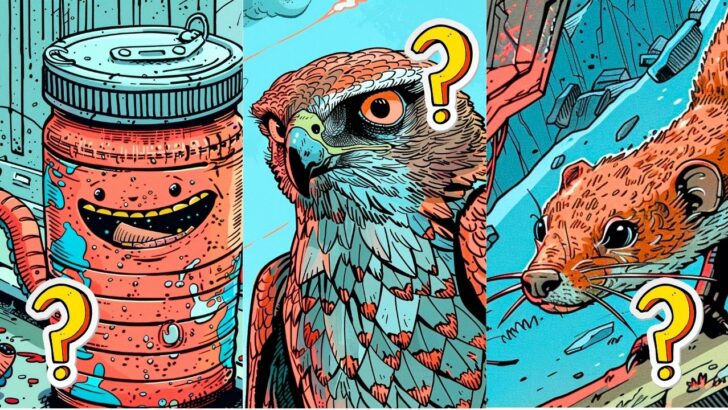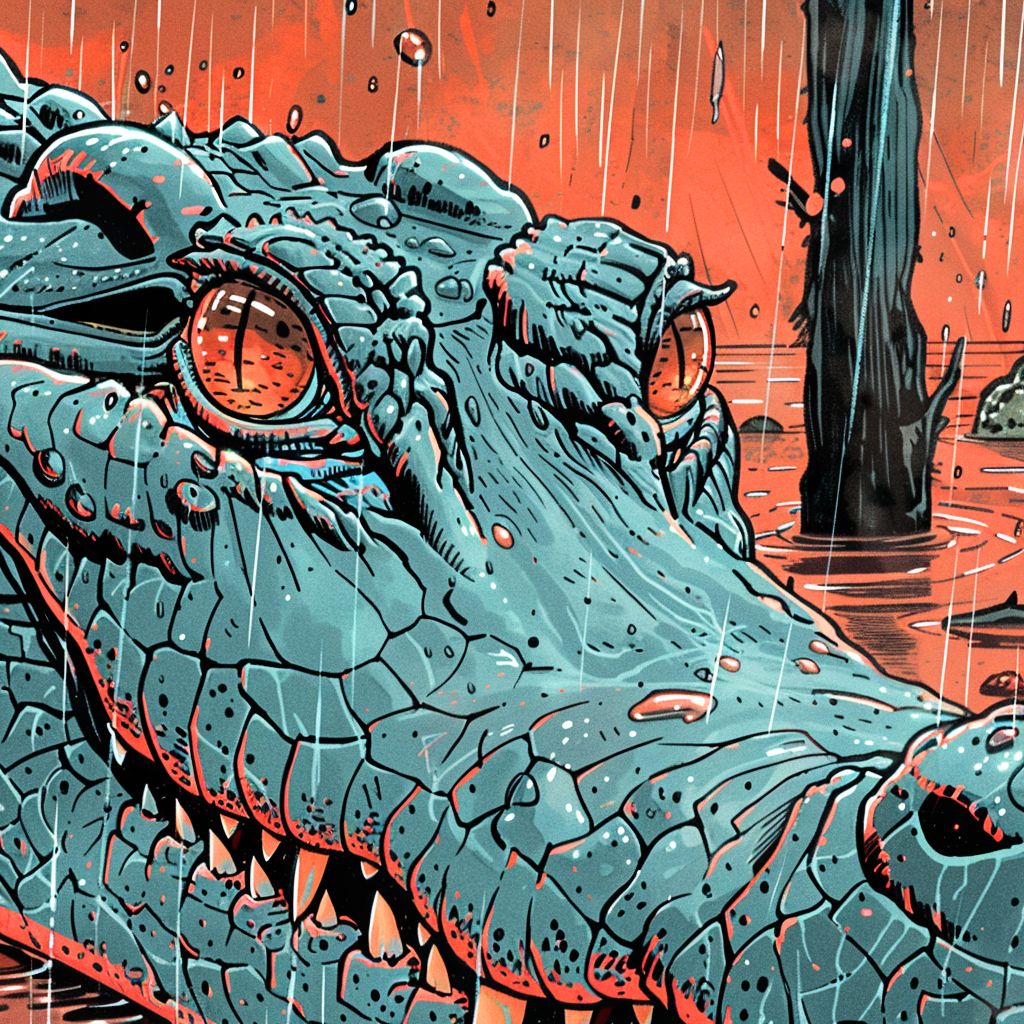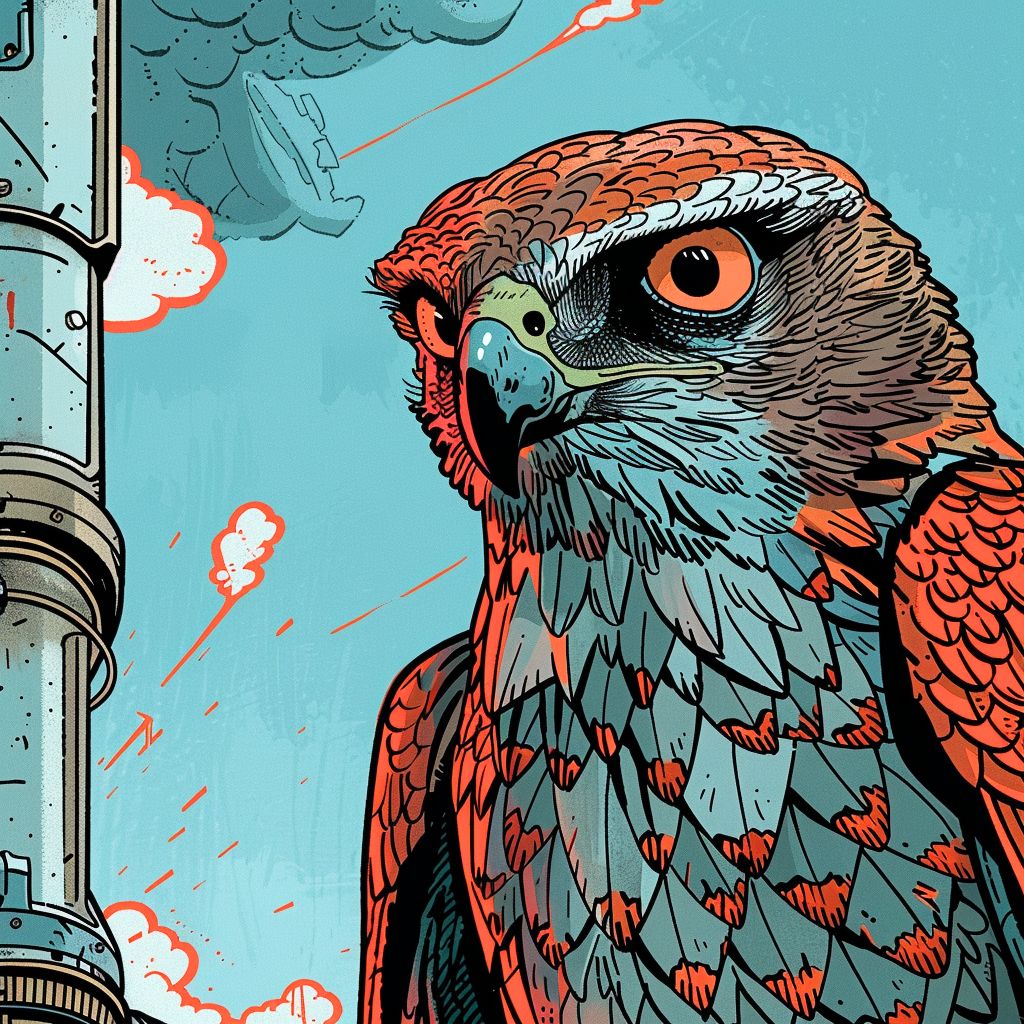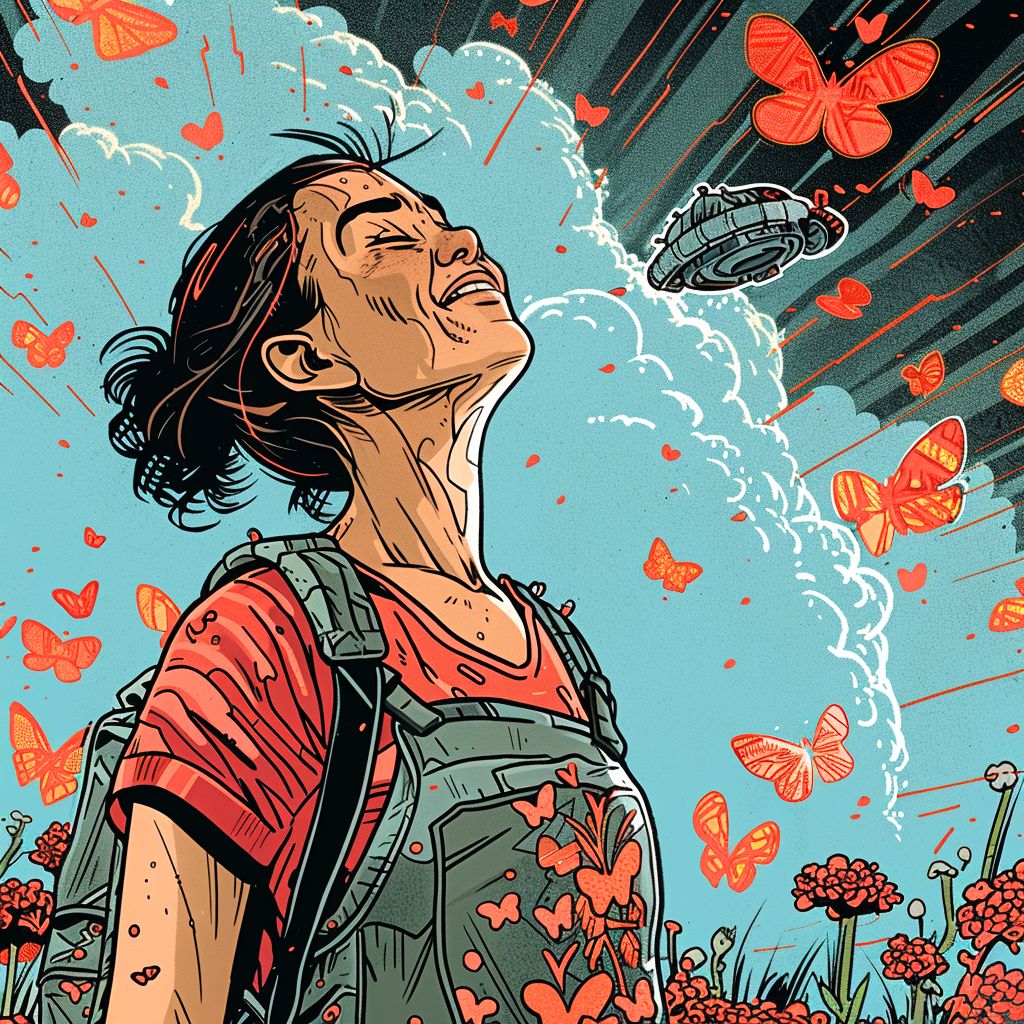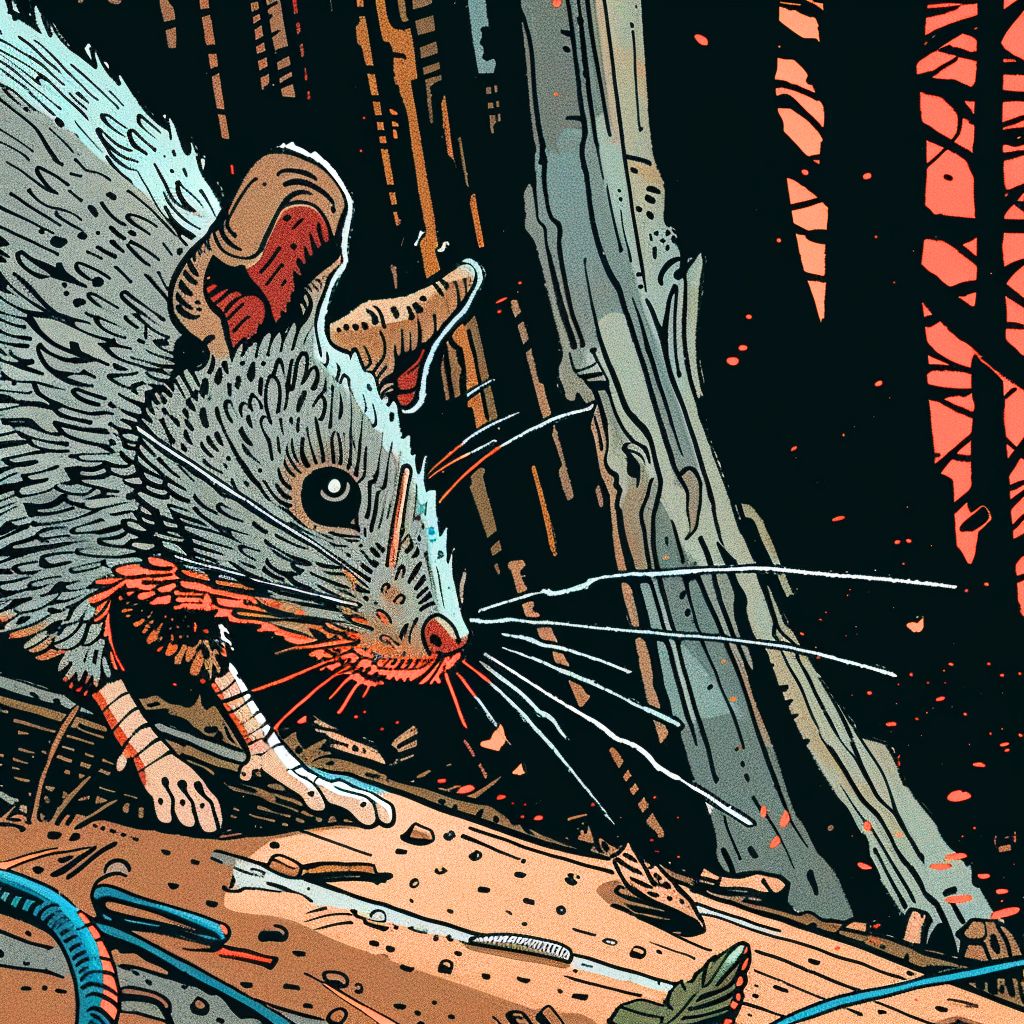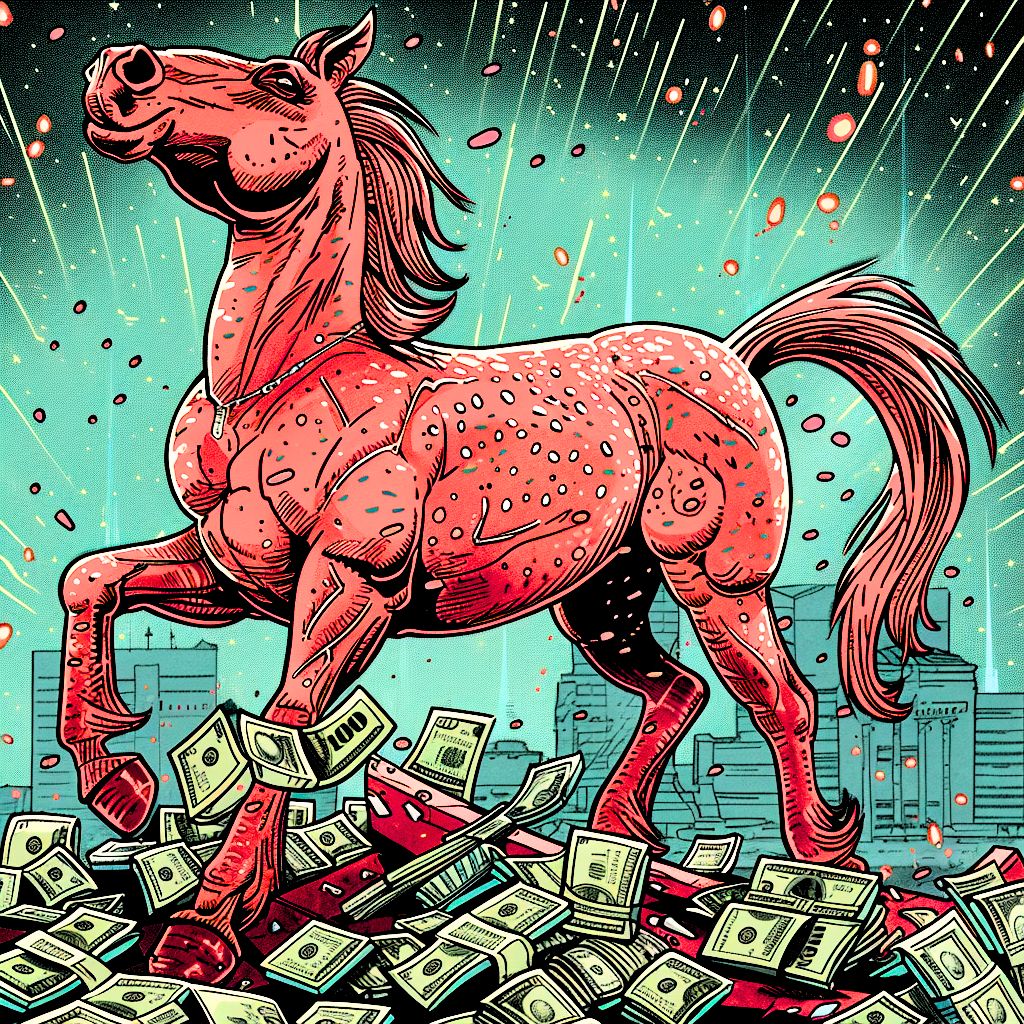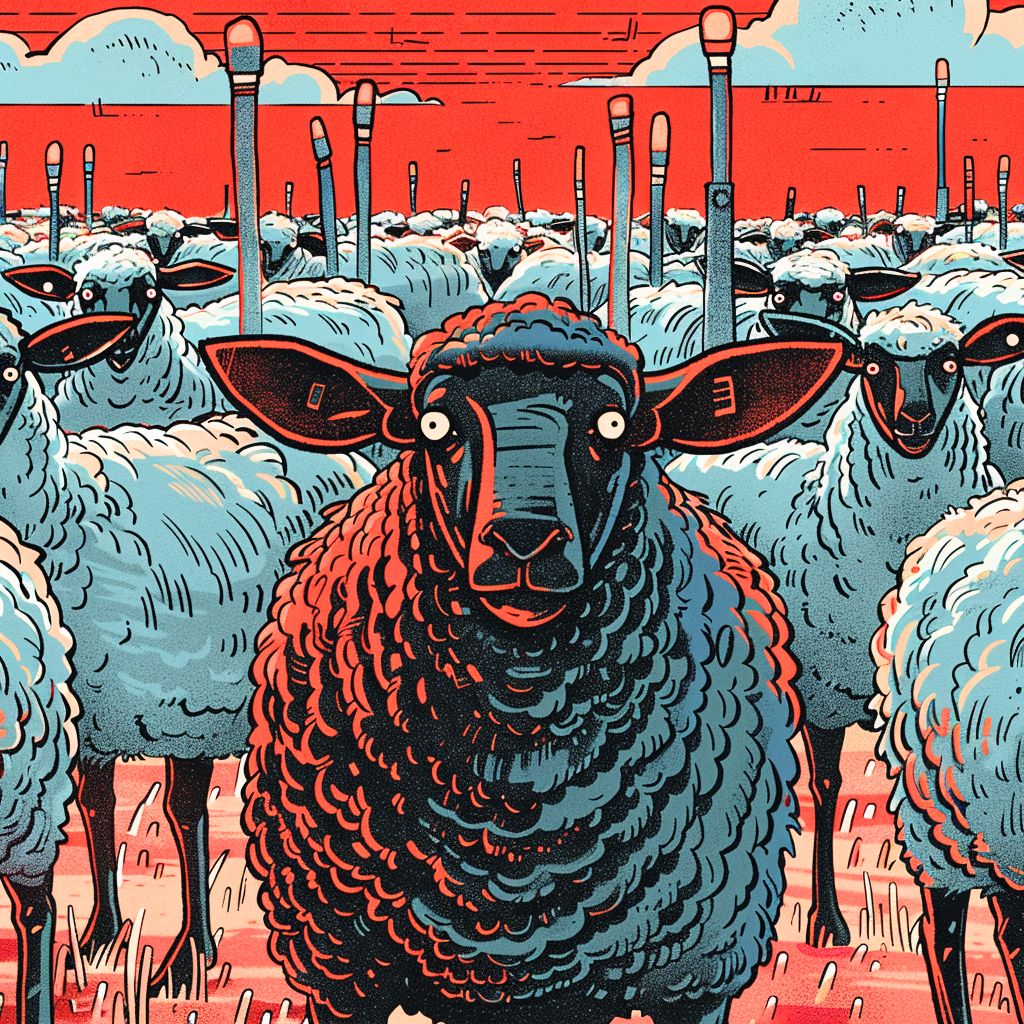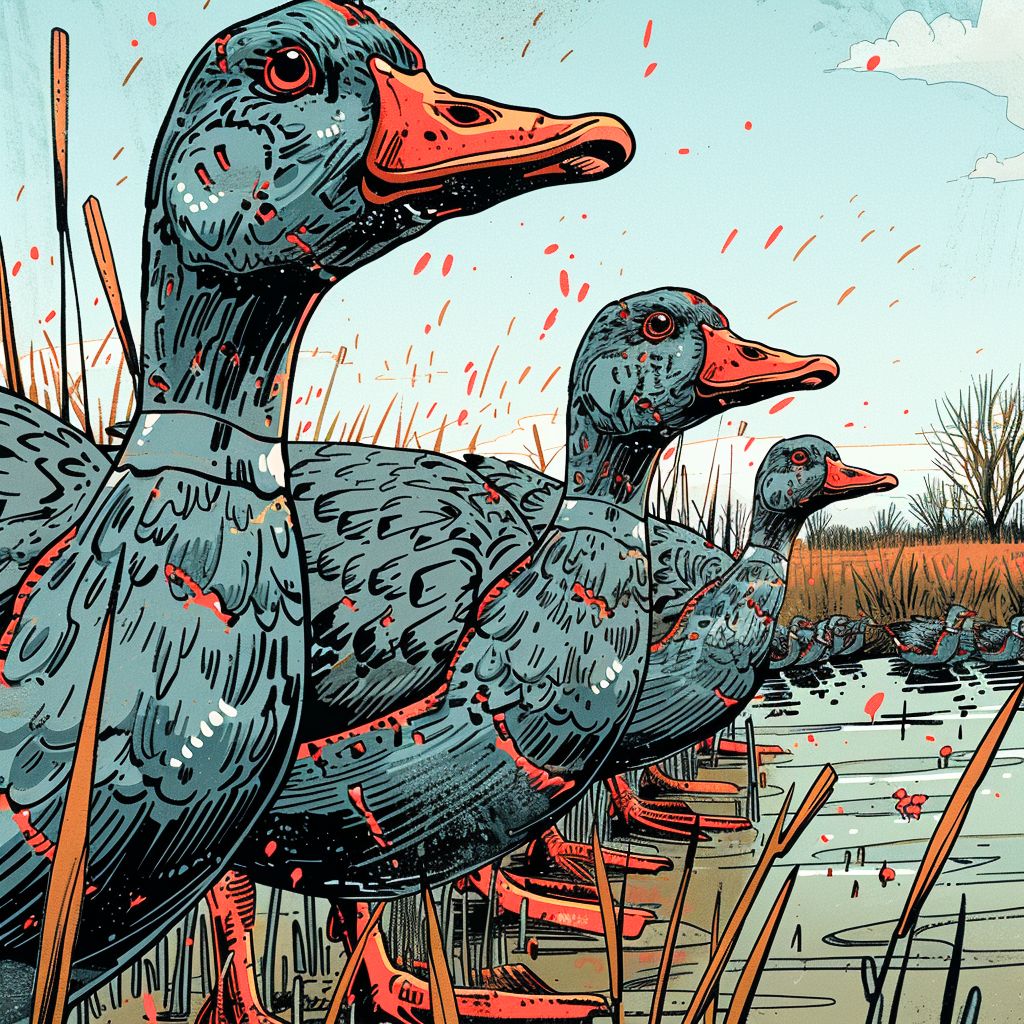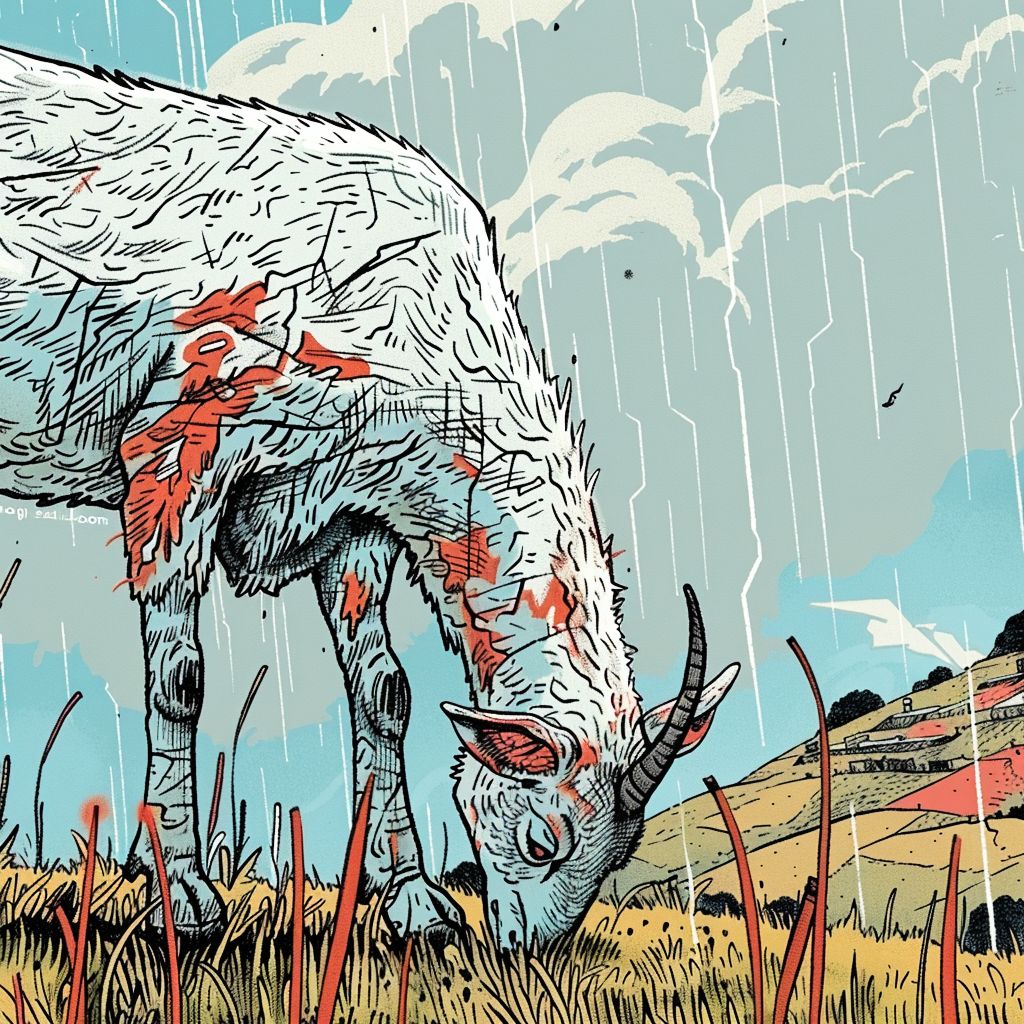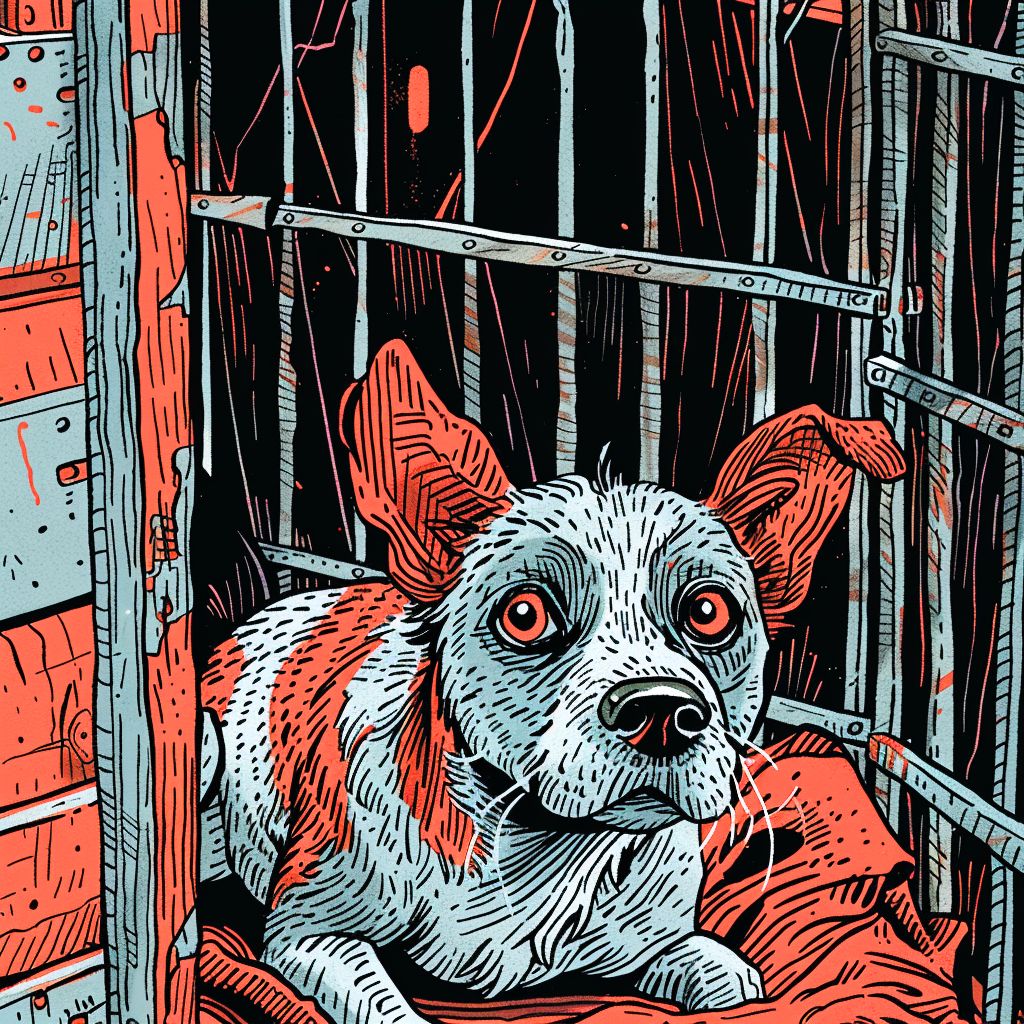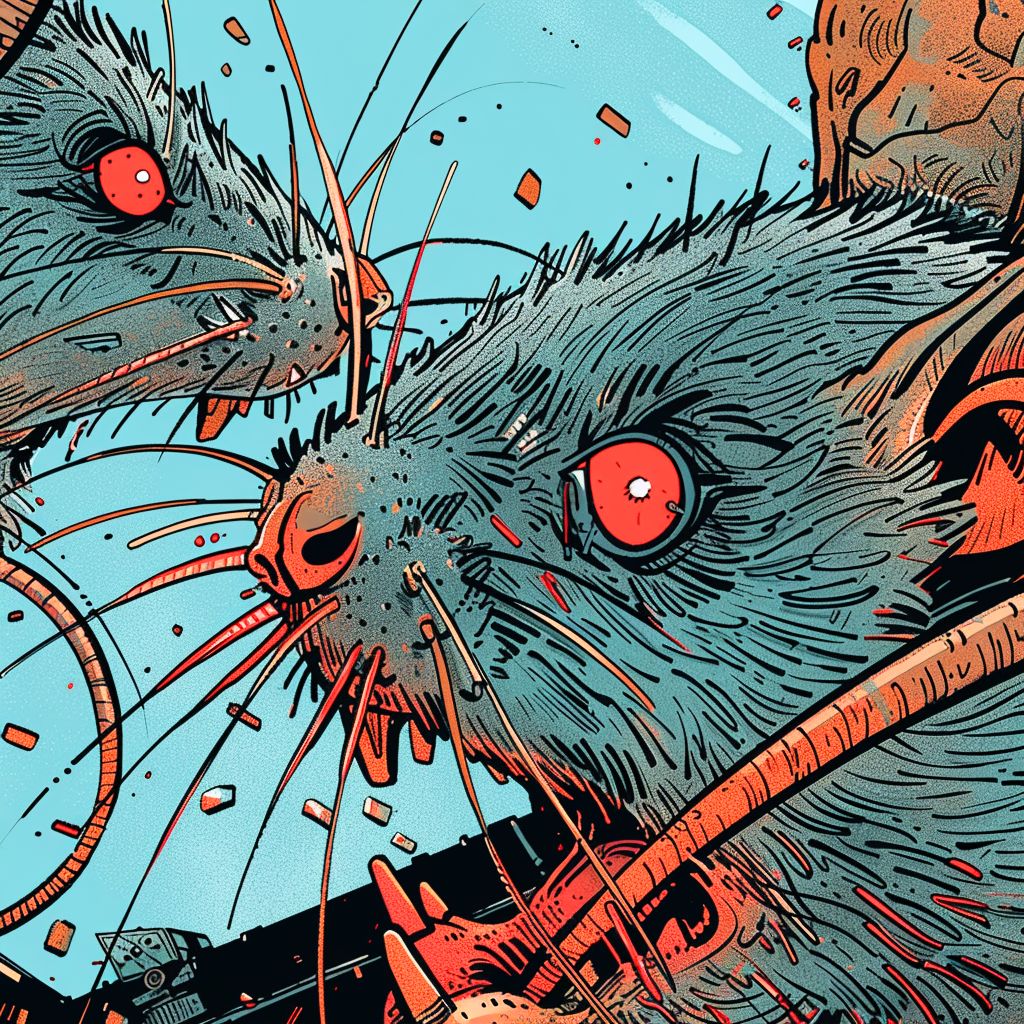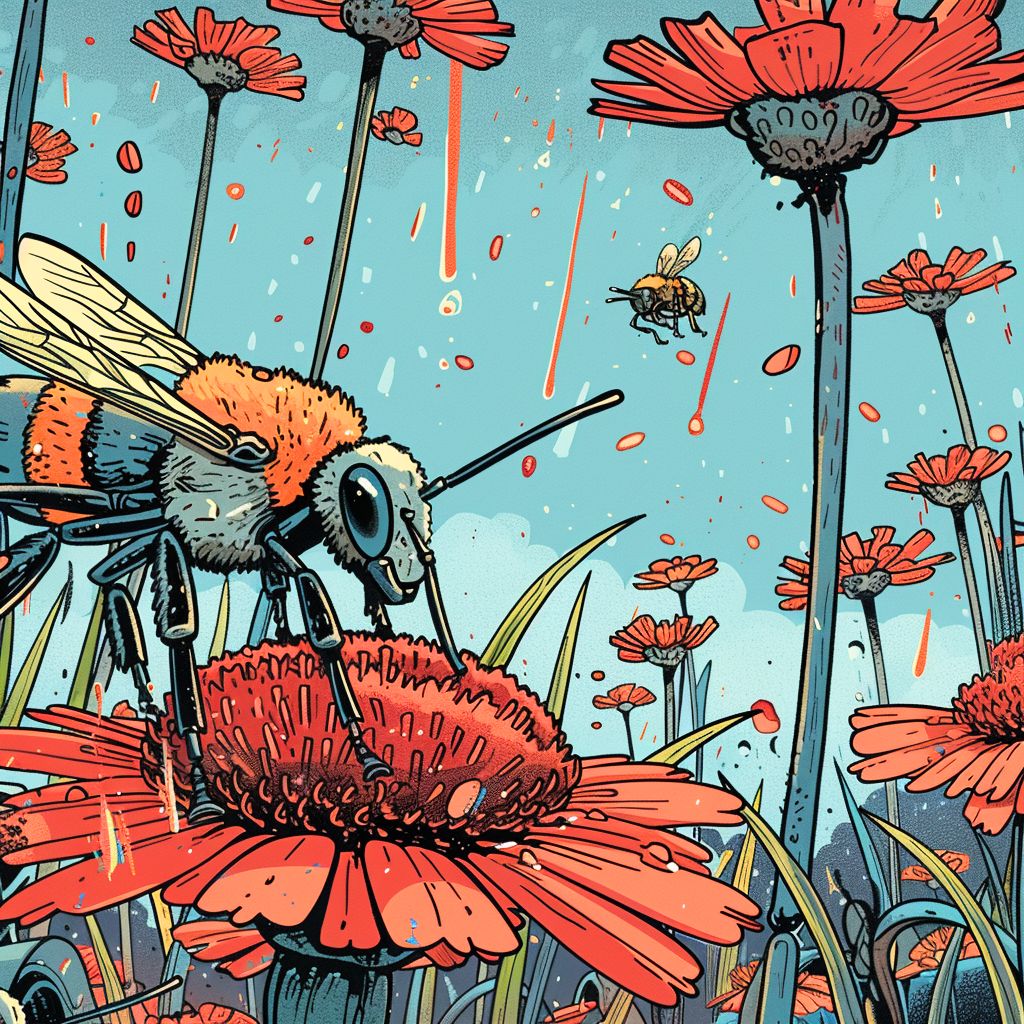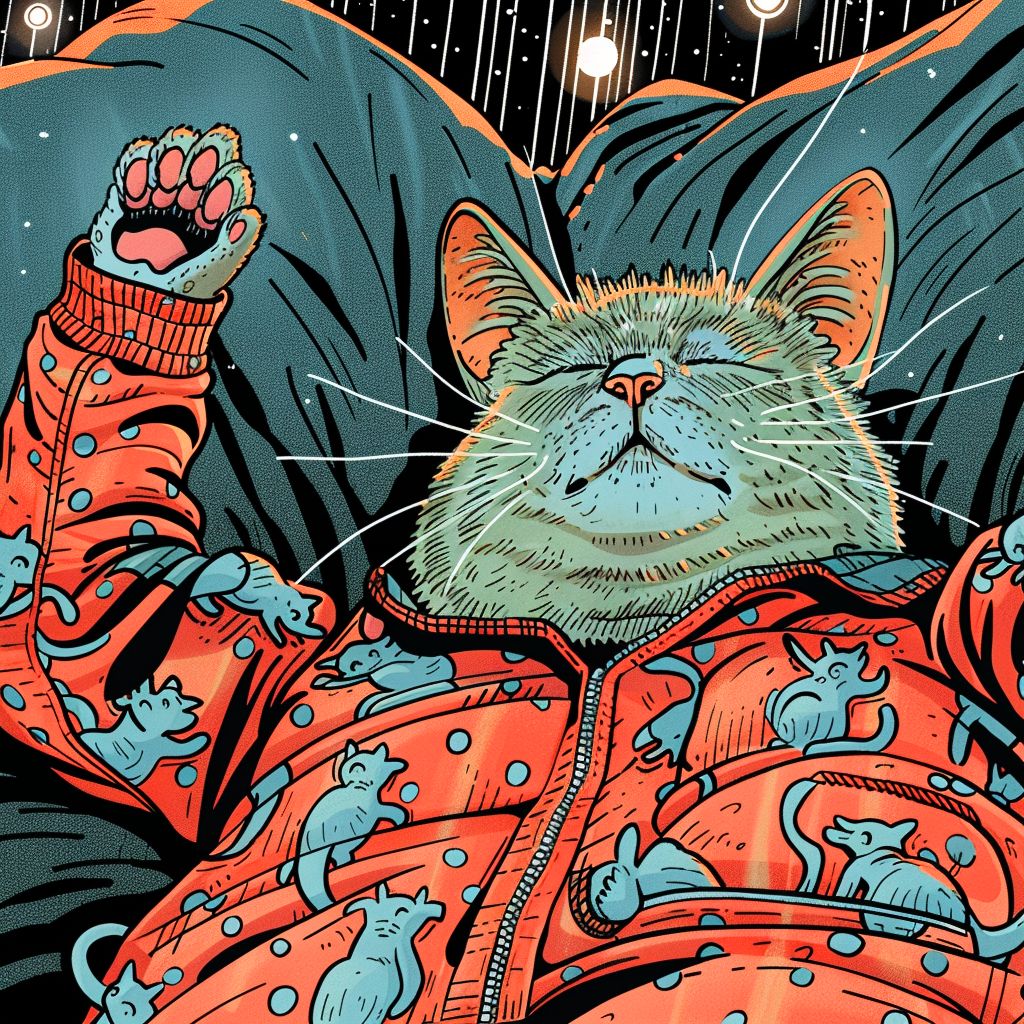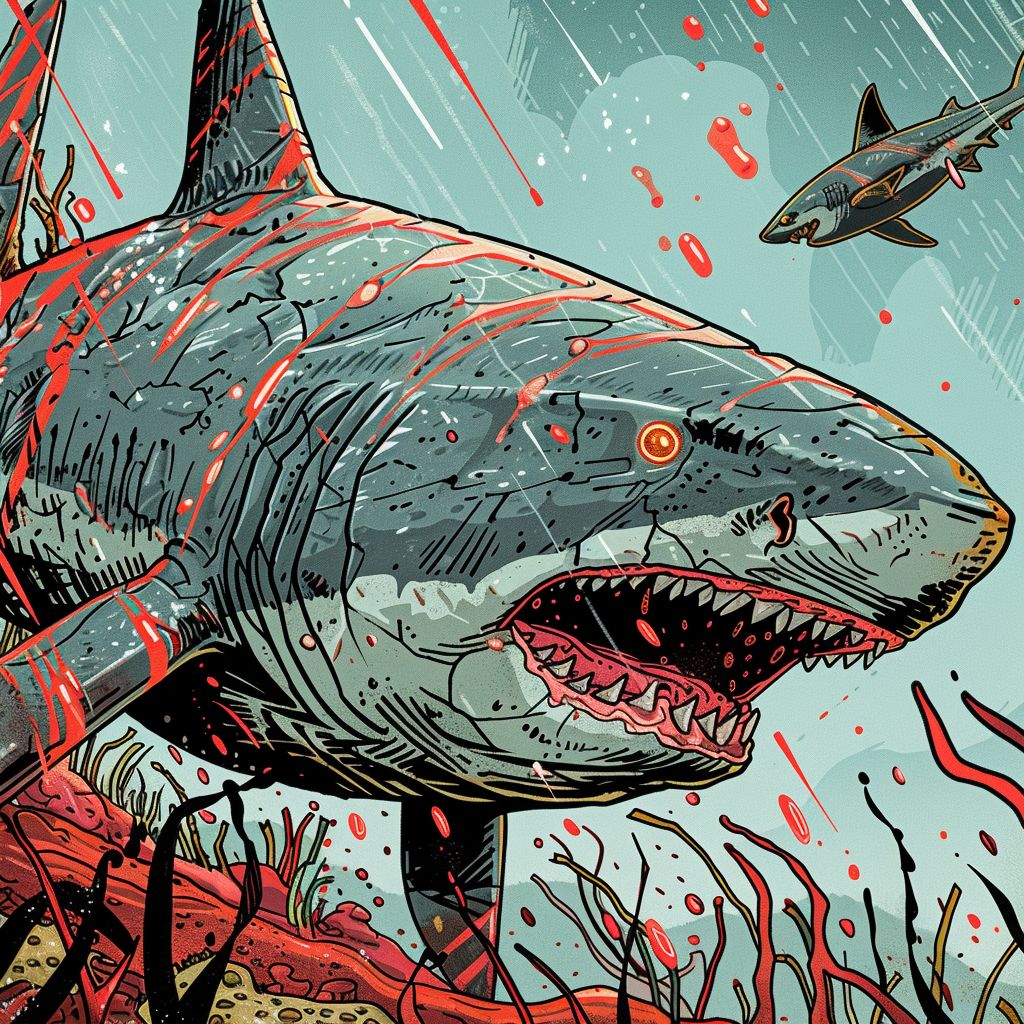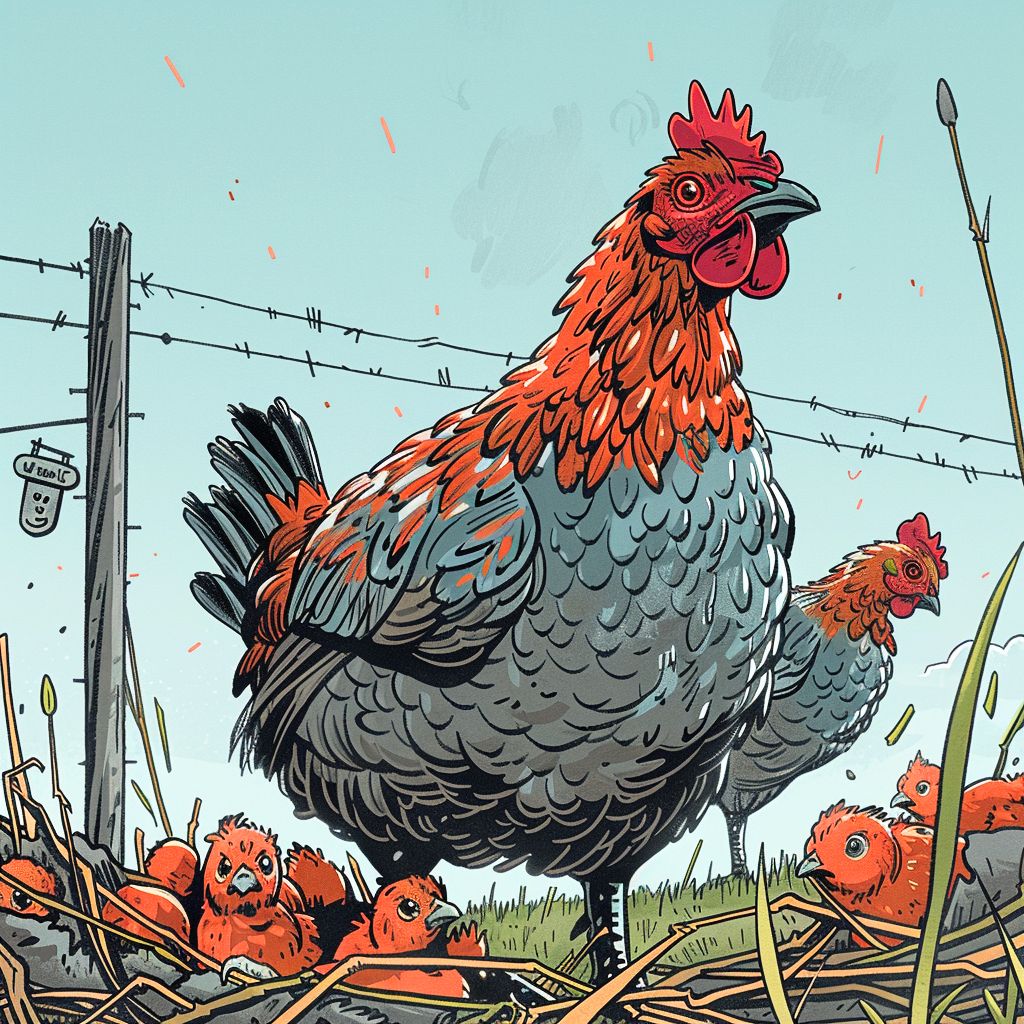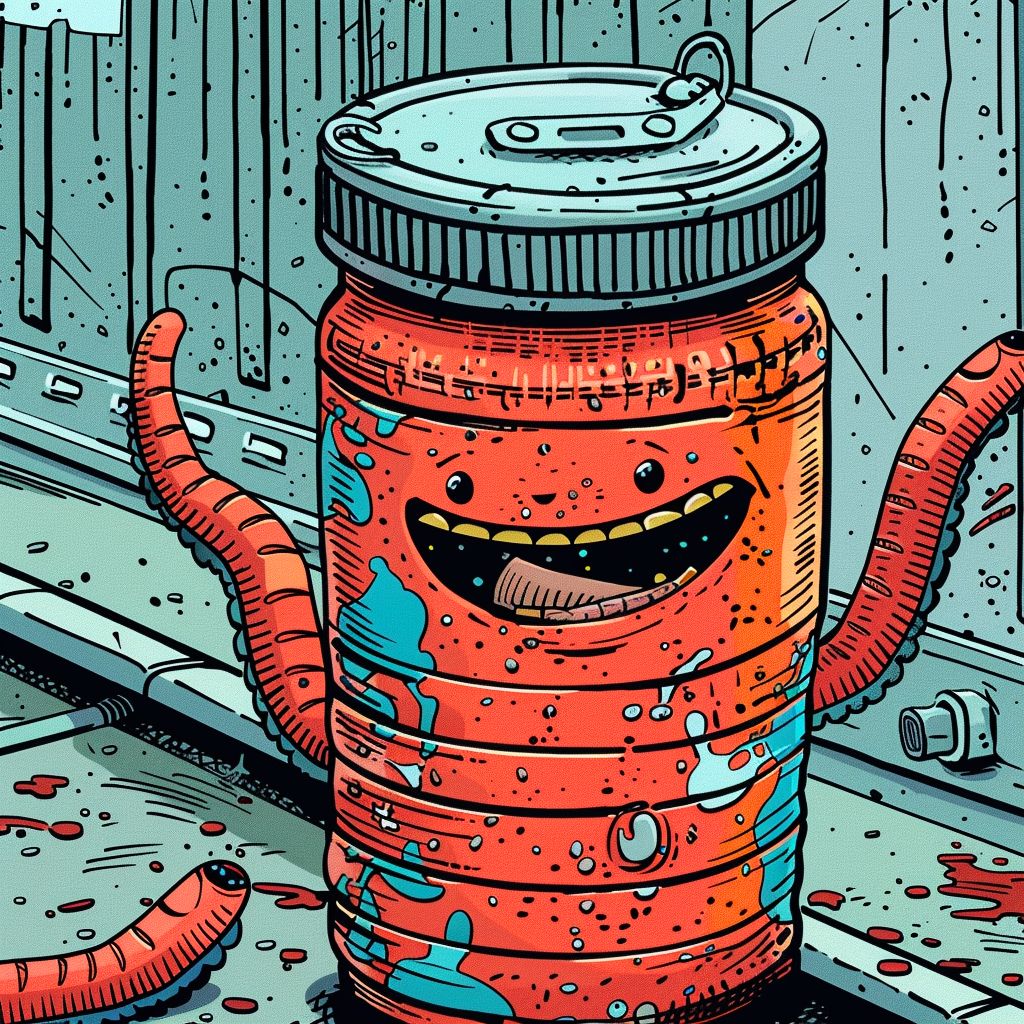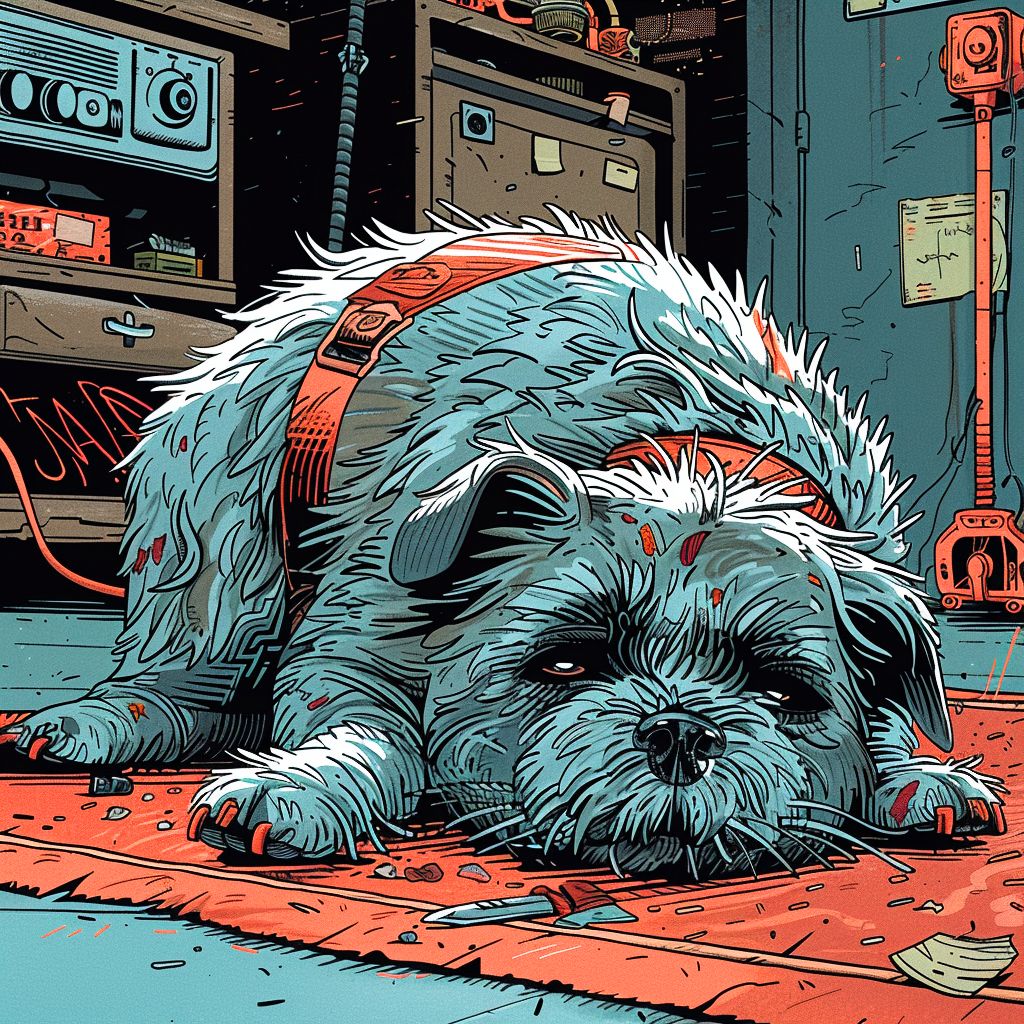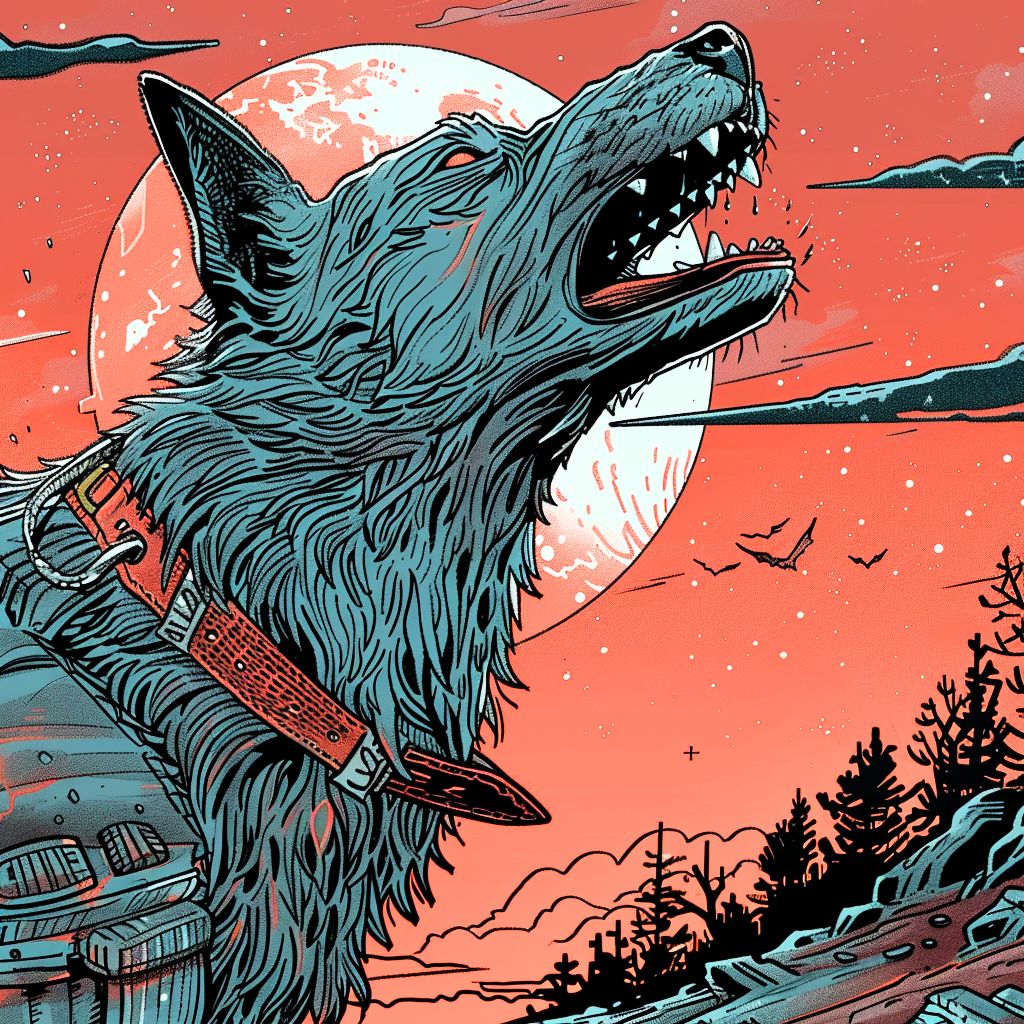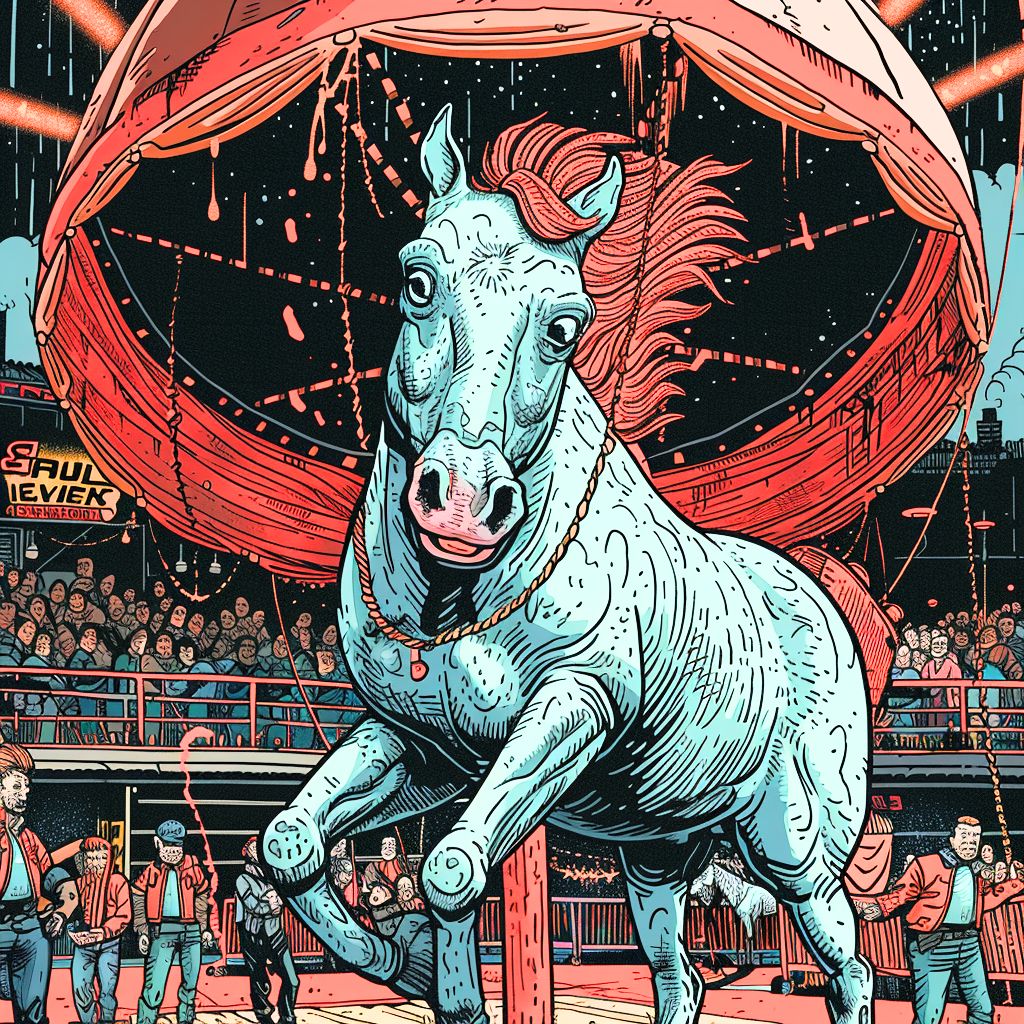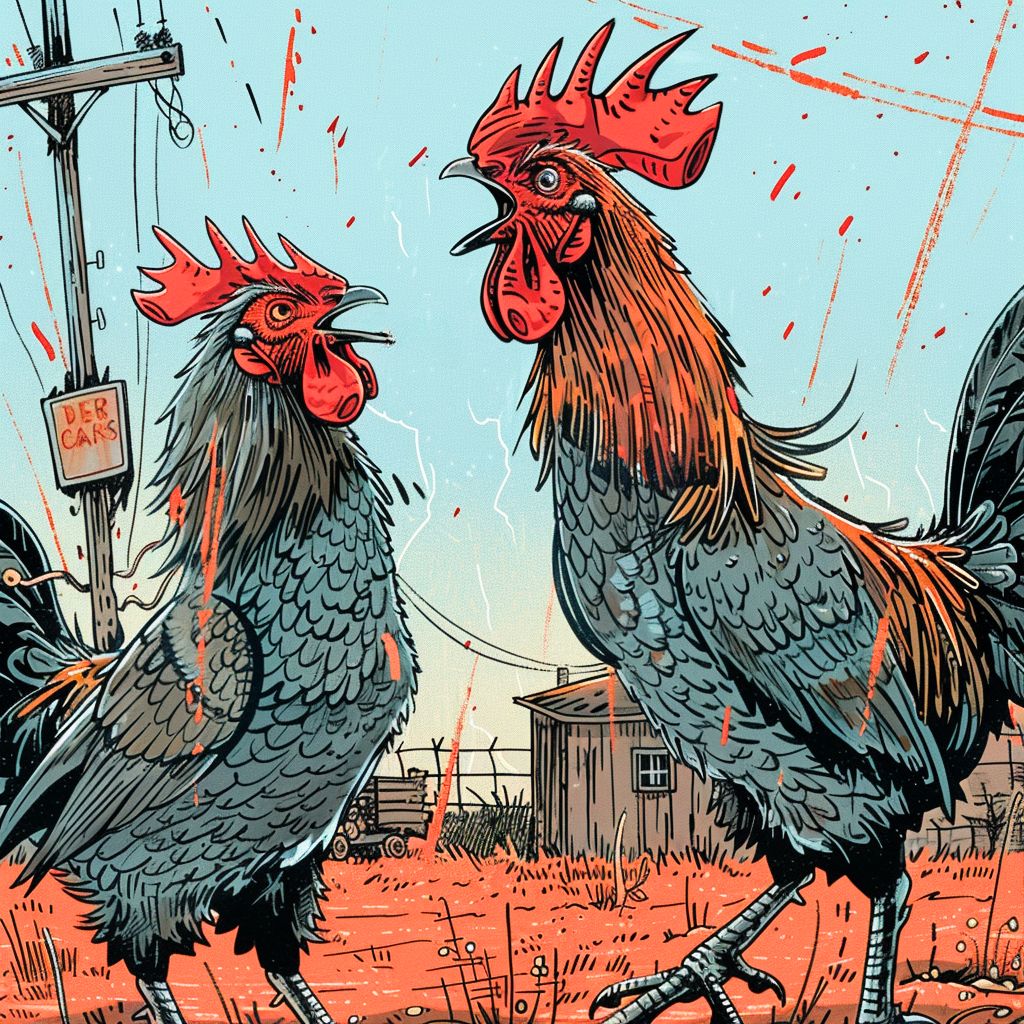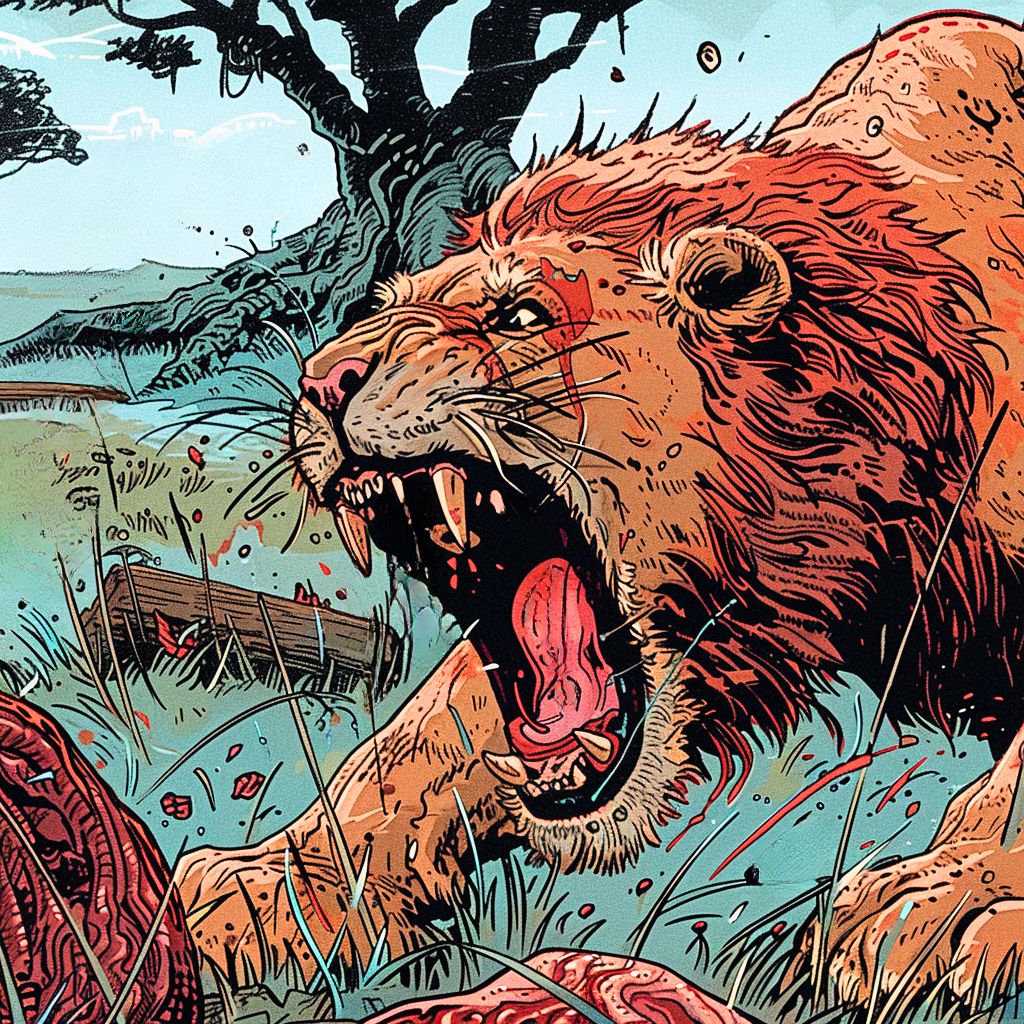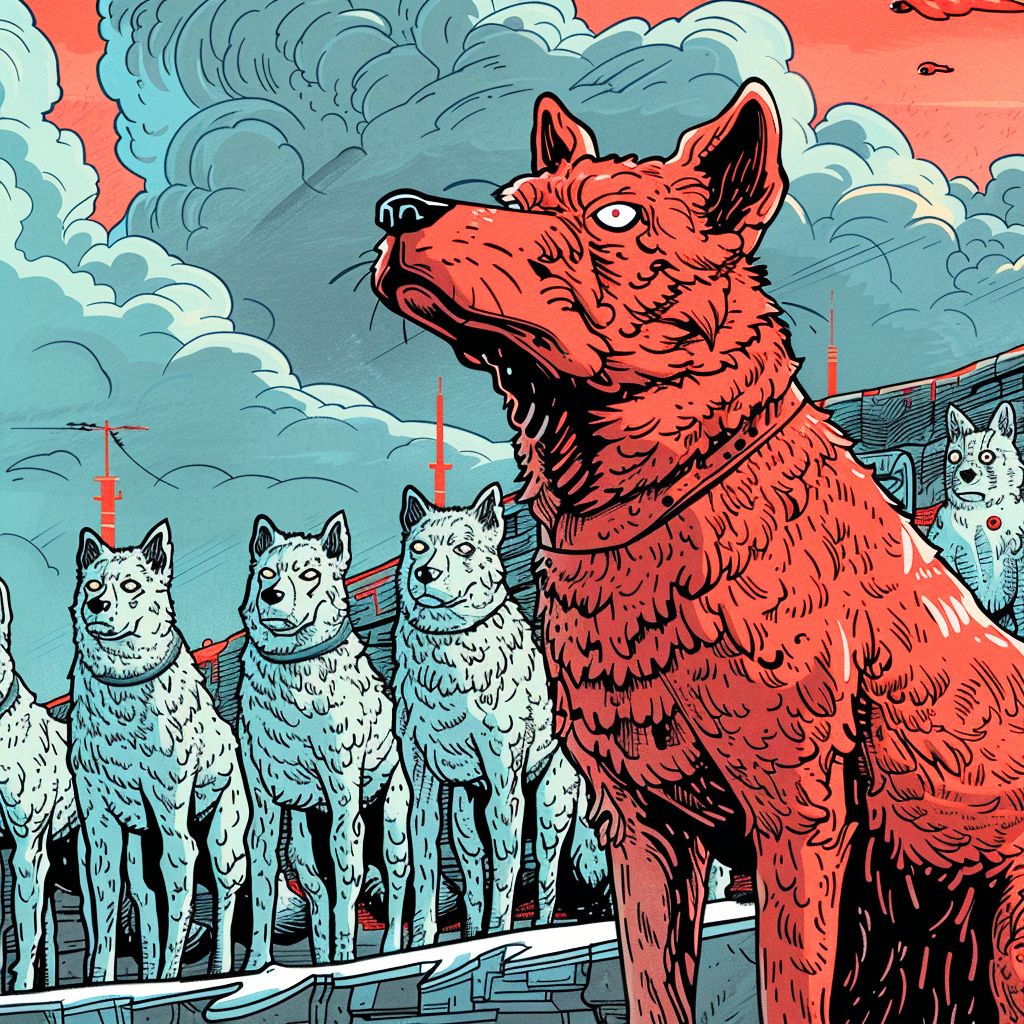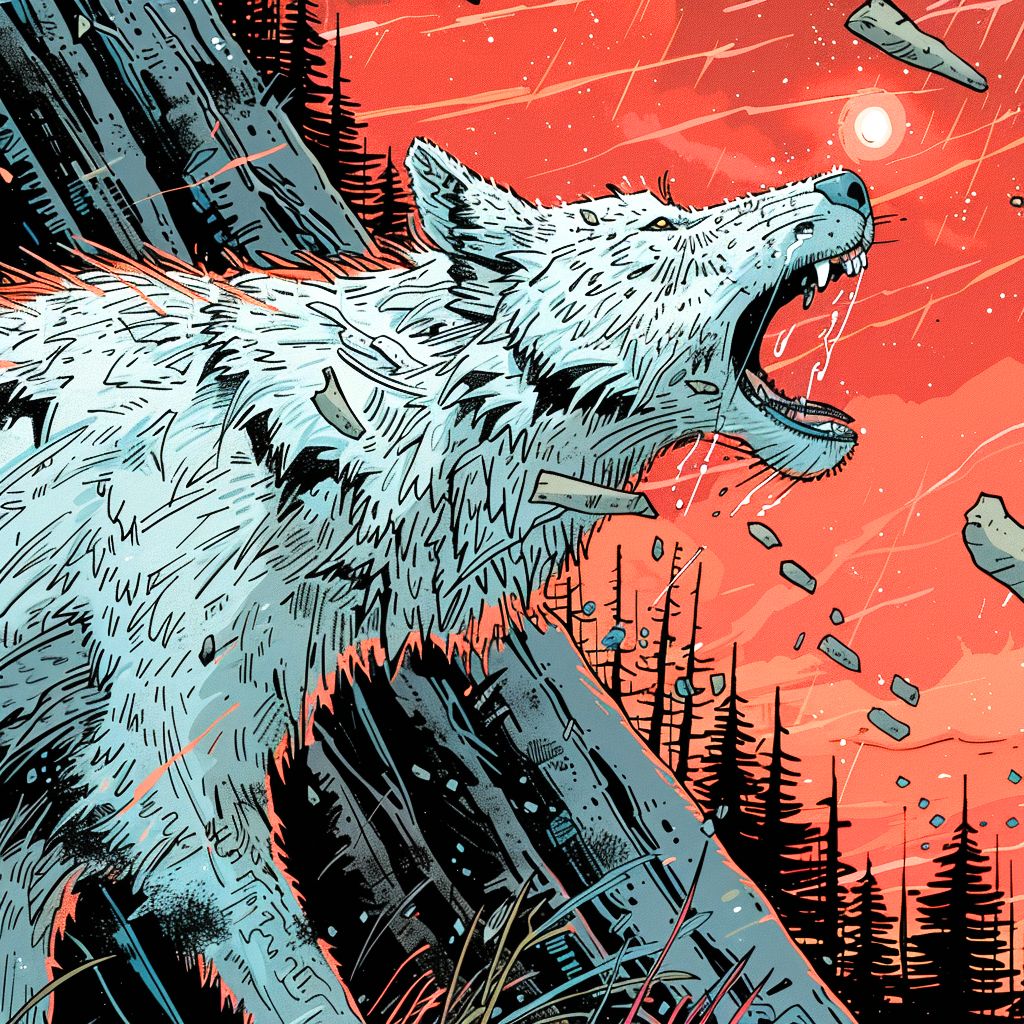Sharing is caring!
Welcome to the dynamic menagerie of animal idioms, where language prowls with the grace of a panther and soars with the precision of an eagle. Ever wonder why someone might “cry crocodile tears” or be called the “top dog”? Strap in—you’re about to embark on a safari through the English language!
This article will gallop through 24 vibrant idioms that animate our conversations with the spirit of the animal kingdom. From the deceptive calm of “quiet as a mouse” to the triumph of securing “the lion’s share,” each idiom adds a layer of vivid imagery to our daily dialogues.
So, let’s unleash the wild side of our vocabulary and venture into the jungle of words. Prepare to saddle up your curiosity and explore how these expressions can lionize your linguistic prowess. It’s time to let the cat out of the bag and discover the animal in all of us through the art of idiom!
Let’s pounce on these phrases and explore their meanings, origins, and how they can be used to enrich your communication. Ready? Let’s leap into the linguistic wilderness!
(Cry) Crocodile Tears
The idiom ‘Cry Crocodile Tears’ is a colorful metaphor for feigned sorrow or insincerity. Imagine a crocodile that sheds tears while devouring its prey; this imagery captures the essence of the expression.
Originating from an ancient myth that crocodiles weep while eating their victims, this phrase has slithered into our language as a depiction of deceitful emotion. It’s all about displaying false sadness to manipulate others or gain sympathy, making it the verbal equivalent of a wolf in sheep’s clothing.
Think of it as the mask of deception in the zoo of idioms—it’s not a genuine display of emotion but a strategic act. Whether feigning upset to skirt blame or simulating regret to manipulate a situation, the goal is to sway perceptions under the guise of hurt.
And indeed, who hasn’t seen a performance where tears were more of a tactic than a truth? This idiom warns us of the ulterior motives hidden behind some emotional displays.
Example 1: When Julie was caught skipping class, she cried crocodile tears to her teacher, hoping for leniency, but her history of mischief had already spoken louder than her sobs.
Example 2: During the negotiation, he cried crocodile tears over his company’s supposed hardships, but the other party saw through the act and pressed on with their demands.”
Watch Like a Hawk
Have you ever felt the intense gaze of someone monitoring every move you make? That’s where the idiom “Watch like a hawk” swoops into play. It describes the vigilant, often protective observation that misses nothing — just like a hawk with its sharp eyesight scouting the ground from high above.
This phrase flutters through our conversations when describing someone extremely attentive to detail. It’s about keen supervision, whether a teacher overseeing a test or a parent keeping an eye on a child at the park. The hawk in this expression symbolizes acute awareness and the ability to spot even the tiniest discrepancy from a distance.
Imagine this scenario in nature: a hawk circling the skies, eyes fixed on the field below, and when it senses slightest movement, dive-bombing down. It’s the epitome of focused surveillance. Applying this level of scrutiny in human affairs, we often find ourselves ‘watching like a hawk’ to ensure no detail is overlooked, whether in work audits, crafting art, or safeguarding valuables.
The idiom encourages us to observe with intention and precision, reminding us that, sometimes, the vigilance of a hawk is necessary to maintain order and safety.
Example 1: The store manager watched the new cashier like a hawk, ensuring that all transactions were handled perfectly during the busy holiday sale.
Example 2: Mrs. Thompson watched the students like a hawk during the school play, ensuring each child hit their cues without a hitch.
Butterflies in Your Stomach
The phrase “butterflies in your stomach” refers to the fluttery sensation one feels in their abdomen, often accompanied by nervousness or excitement, particularly in anticipation of a significant event or encounter. This idiom vividly captures the physical sensation of butterflies flitting about in one’s stomach, symbolizing a mixture of nervousness and anticipation.
While this expression is commonly associated with anxiety or apprehension, it can also signify the excitement and exhilaration of falling in love. In romantic relationships, the fluttery sensation in the stomach often accompanies the thrill of being near someone special or embarking on a new romantic journey.
Imagine the exhilaration of a first date, with butterflies dancing in your stomach as you eagerly await the arrival of your crush. It’s a tangible reminder of the emotional rollercoaster that comes with the experience of love and romance, where every moment is infused with anticipation and excitement.
“Butterflies in Your Stomach” captures the nervous energy of anticipation and celebrates the intoxicating thrill of romantic attraction and the joy of embarking on a new romantic adventure.
Example 1: As they stood face to face, Sarah felt butterflies in her stomach, her heart racing with the excitement of falling for someone so effortlessly charming.
Example 2: With each passing moment, John’s anticipation grew, butterflies swirling in his stomach as he prepared to confess his feelings to his longtime crush.
Quiet as a Mouse
“Quiet as a mouse” captures the essence of stealth and unobtrusiveness. It is often used when someone tries their utmost not to be noticed. The idiom references the tiny, cautious mouse, expert at slinking silently through the shadows, keen to avoid detection.
It’s the go-to description for moments requiring supreme quietness—think of a secretive midnight snack raid or sneaking past a sleeping guard dog. The imagery is explicit: as inconspicuous as a mouse navigating a quiet room, avoiding every creaky floorboard.
Consider the mouse’s skill in moving undetected, which inspires us to tread lightly and speak softly when the situation demands. This phrase is often employed when maintaining silence is crucial, whether hiding a surprise or respecting a solemn occasion.
By invoking this idiom, we comment on the quietness and acknowledge the careful attention people pay to their actions during delicate moments.
Example 1: He moved through the dimly lit hallway as quietly as a mouse, ensuring his parents didn’t hear him come in late.
Example 2: In the tense moments before the concert began, the performers backstage were quiet as a mouse, each lost in their preparations
To Have a Whale of a Time
To have a whale of a time conveys immense joy and fun, much like witnessing a massive whale breaching in a spectacular display of freedom and power. This idiom is perfect for describing those moments that are enjoyable and memorably exhilarating.
The expression plays on the image of the whale, the ocean’s gentle giant, whose sheer size and joyful antics serve as a metaphor for large-scale fun. It’s typically used to recount occasions filled with laughter, adventure, and unbridled pleasure—like a rollicking party or an exciting vacation.
Imagine diving into an experience as vast and thrilling as the ocean, where every moment bursts with life and happiness, much like a whale making its majestic leap from the water. It’s about those times when everything feels larger than life, and joy spreads as wide as the whale’s path through the sea.
This idiom celebrates the scale of enjoyment and encourages us to embrace moments of pure bliss and share them with others, much like the shared awe of seeing a whale in the wild.
Example 1: The kids had a whale of a time at the amusement park, riding roller coasters and eating cotton candy from morning till night.
Example 2: Our family reunion was a whale of a time, filled with games, stories, and laughter that echoed through the house.
Pony Up
To “pony up” means to pay or settle a debt—akin to someone stepping up and handing over what is due. This expression brings to mind the old days when ponies were commonly used for transportation, and handling financial obligations often involved literal horse-trading.
The idiom often pops up in casual conversation when someone needs to contribute their share of a cost, whether splitting a dinner bill, paying back a borrowed sum, or contributing to a group gift. It conveys a sense of stepping forward and fulfilling an obligation, not unlike a rider ensuring a stable hand is compensated.
Picture this: you’re at a bustling market, and it’s time to “pony up” for the goods you’ve gathered—there’s a straightforward, no-nonsense transaction with a touch of old-world charm. It’s about being concise and responsible in financial dealings, a reminder of the simple honesty of commerce in times past.
This idiom doesn’t just remind us to pay our dues; it also taps into the ethos of fairness and accountability, encouraging everyone to chip in as required.
Example 1: As the dinner party ended, Jake reminded everyone to pony up for their portion of the bill.
Example 2: When the annual road trip rolled around, all friends were quick to pony up their share of the car rental and gas money.
Black Sheep
The idiom “Black Sheep” describes an outlier in a group, often someone considered unconventional or the odd one out in a family or community. Just as a black sheep stands out in a flock of white, this expression highlights contrast and difference.
This phrase frequently surfaces in discussions about family dynamics or social circles where one member’s actions or lifestyle starkly differs from the norm. It encapsulates the notion of deviation from the standard, whether due to rebellious behavior, unconventional choices, or misunderstanding.
Imagine a single dark figure among a sea of white, moving to its rhythm and following a unique path. It’s about the isolation that can come from being markedly different and the strength required to stand apart from the crowd.
“Black Sheep” describes nonconformity and invites us to explore the complexities of identity and belonging. It challenges us to consider whether standing out is a burden or a badge of honor.
Example 1: Always the black sheep of the family, Maria pursued a career in art while everyone else became engineers, much to her parents’ dismay.
Example 2: At work, John felt like the black sheep; his casual demeanor and creative approach often clashed with the corporate culture.
Get Your Ducks in a Row
To “get your ducks in a row” means to organize things well and prepare meticulously—envision a neat line of ducks, each following the other across a tranquil pond. This idiom conveys the need for order and readiness before undertaking any project or important task.
This phrase is commonly used in personal and professional settings when discussing the importance of planning and arranging details to ensure smooth execution. It suggests a strategic alignment of all elements involved, similar to a well-coordinated water ballet ducks perform.
Imagine the calming sight of ducks in perfect alignment, each moving in harmony with the others. It’s about control and precision, ensuring that every plan aspect is accounted for and lined up before action is taken.
By invoking this idiom, we stress not only the value of preparation but also the peace of mind that comes from knowing everything is set and ready to go, much like watching ducks glide effortlessly across the water.
Example 1: Before launching the new marketing campaign, the team worked late to get their ducks in a row and ensure every detail was perfect.
Example 2: He spent the weekend preparing for the upcoming audit by organizing files and double-checking all the entries.
Scapegoat
The term “scapegoat” refers to a person or group made to bear the blame for others. This idiom hails from an ancient ritual where a goat was symbolically burdened with the community’s sins and then driven out, an act of purification.
Today, the expression is used when blame is unfairly shifted onto one party, often to deflect responsibility from those at fault. It embodies the idea of taking one for the team, albeit involuntarily, and usually highlights issues of justice and accountability in social and professional environments.
Imagine a lone goat, isolated and blamed, a poignant image of innocence accused. It’s about the dynamics of the fault and the ease with which groups might find relief in pointing fingers at a convenient target rather than facing their own failings.
“Scapegoat” not only illuminates the act of blaming but also prompts us to question the fairness and basis of our accusations. It encourages a deeper look at how and why we assign blame, urging a fairer approach to resolving issues.
Example 1: After the project failed, the team found a scapegoat in the newest member, blaming him for the delays despite the problems existing well before his arrival.
Example 2: She became the scapegoat for the company’s financial problems, even though senior management had always made the decisions.
To Play Possum
“To play possum” means pretending to be dead or unconscious to avoid confrontation, much like a possum miming death when threatened. This idiom captures the essence of a strategic withdrawal, employed to evade danger or defer conflict.
This phrase is often used when someone feigns ignorance or nonchalance in a situation where being overtly aware might invite further scrutiny or complication. It’s a survival tactic, not just in the wild, where possums use this trick to deceive predators, but also in human interactions, where playing possum can avert unwanted attention or diffuse a tense scenario.
Imagine a seemingly lifeless possum lying still enough to convince others it’s no longer a viable target. It’s about choosing passivity as a deliberate ploy to maintain safety or stability until the threat passes.
This idiom not only illustrates the act of deception but also encourages us to consider the situations in which inaction can serve as a prudent defense. It reminds us that sometimes, the best action is to hold back and wait out the danger.
Example 1: When the boss started asking about the missing reports, Jake played possum, hoping someone else would chime in and provide an explanation.
Example 2: During the heated debate, she played possum, pretending not to notice the rising tension and avoiding becoming a target herself.
In the Doghouse
To be “in the doghouse” is to be in trouble or out of favor, often due to a mistake or misbehavior. This idiom evokes the image of a dog sent to its kennel as punishment, symbolizing isolation and temporary disgrace.
This expression is commonly used in personal relationships and workplace scenarios, where someone might be sidelined after a blunder. It’s about experiencing the chilly reception of being metaphorically banished to the doghouse, where one must contemplate their errors and seek redemption.
Imagine a dog, tails between its legs, taking refuge in its kennel after knocking over a cherished vase—a picture of regret and penitence. It’s a powerful reminder of the consequences of our actions and the sometimes solitary path to making amends.
“In the doghouse” not only depicts the state of being out of favor but also encourages a reflection on what brought us there. It challenges us to mend fences and rebuild trust, much like a dog earning its way back into the warm house.
For more colorful expressions like this, explore our article on 11 Dog Idioms Every Dog Lover Must Know, which delves into the fascinating world of canine metaphors in language.
Example 1: After forgetting their anniversary, Mike found himself in the doghouse, knowing it would take more than flowers to make things right.
Example 2: Jenna was in the doghouse at work for missing the critical deadline and had to work extra hard to regain her boss’s confidence.
To Rat Out
To “rat out” means to betray someone by reporting their misdeeds or secrets, often to an authority figure. This idiom leverages the sneaky and despised reputation of the rat, suggesting underhanded behavior and disloyalty.
This expression is frequently used in settings ranging from schoolyards to corporate offices, where revealing someone’s confidential information can have serious repercussions. It speaks to the act of turning informant, sometimes for personal gain or as a means of self-preservation.
Imagine a rat skulking in the shadows, overhearing secrets and scurrying off to whisper them to those in power. It captures the essence of treachery woven into ratting someone out, often seen as a violation of trust and camaraderie.
“Rat out” not only highlights the betrayal but also paints the informant in a negative light, urging us to consider the ethical implications of our choices to disclose information.
Example 1: He decided to rat out his coworker to the manager for skipping shifts, hoping it would put him in a favorable light for the upcoming promotion.
Example 2: Faced with the threat of suspension, the student ratted out his friends who had cheated on the exam, causing a rift in their friendship.
The Bee’s Knees
To say something is “the bee’s knees” is to declare it outstanding or excellent. This charming idiom from the 1920s flapper era encapsulates admiration and high praise, using the image of a bee—industrious, essential to pollination, and always finding the best flowers—as a symbol of top quality.
This phrase highlights the best features, from innovative gadgets to stellar performances. It conveys enthusiasm and approval with a touch of whimsy, suggesting that something can carry the essence of perfection like a bee to its knees covered in pollen.
The exact origin of “the bee’s knees” remains uncertain, but it’s believed to have been influenced by the trend of creating nonsensical or humorous phrases that were popular in the Jazz Age. It’s possible that the phrase arose simply because bees are associated with pollinating flowers, and their knees would be small and delicate, much like something exceptionally fine or minuscule.
Imagine a bee diligently hopping from flower to flower, each knee dusted with golden pollen—the very picture of nature’s efficiency and splendor. This expression applauds excellence and adds a vintage flair to our compliments, making them memorable and picturesque.
“The bee’s knees” not only celebrates superior quality but also revives the playful spirit of jazz-age slang, encouraging us to appreciate and articulate the extraordinary in our everyday lives.
Example 1: Her new dessert recipe was the bee’s knees at the dinner party, with guests asking for seconds and thirds.
Example 2: The latest smartphone model is really the bee’s knees—it has an amazing camera and battery life that lasts for days.
The Cat’s Pajamas
To say something is “the cat’s pajamas” is to declare it exceptionally cool, appealing, or stylish. This idiom, also rooted in the playful vernacular of the 1920s, uses the amusing image of a cat dressed in pajamas to evoke something that is the epitome of excellence and modern chic.
The phrase perfectly describes anything from avant-garde fashion to a sleek new gadget, highlighting its uniqueness and trend-setting nature. It conveys a sense of admiration and enthusiasm for things that stand out from the crowd due to their distinctive qualities.
Imagine a cat nonchalantly strutting in snazzy pajamas, turning heads and sparking smiles. It’s a whimsical and memorable way to commend someone or something that is not just good but spectacularly so. The visual of a feline in cozy, stylish attire embodies the blend of unexpected charm and sophistication that this expression celebrates.
“The cat’s pajamas” not only spices up our language with its vivid imagery but also captures the joy of celebrating the truly remarkable, inviting us to revel in the fun and flair of our choices. Whether it’s a groundbreaking piece of technology or a breathtaking piece of art, calling it “the cat’s pajamas” implies it is a trendsetter in its field, worthy of admiration and discussion.
Read more into our post 11 Cat Idioms Every Cat Lover Must Know, for further exploration into this and other cat-inspired phrases that explore the intriguing ways cats have influenced language.
Example 1: His new jazz album is really the cat’s pajamas—it’s got everyone talking about his innovative sound.
Example 2: This new fusion restaurant is the cat’s pajamas, blending flavors in ways no one else in the city does.
Shark-infested Waters
To describe a situation as “shark-infested waters” emphasizes its dangerous or treacherous nature, much like swimming in waters inhabited by predatory sharks. This vivid idiom evokes the image of hazardous circumstances where one must navigate with extreme caution to avoid harm.
This phrase is commonly used in various contexts, from describing risky financial markets to cautioning against entering competitive industries. It conveys a sense of foreboding and warns of potential hazards lurking beneath the surface.
Imagine a shark prowling beneath the waves; its presence felt but unseen, instilling fear and wariness in anyone venturing into the water. It’s a stark reminder of the need for vigilance and strategic thinking when faced with dangerous challenges.
“Shark-infested waters” not only paints a vivid picture of peril but also urges us to approach risky situations with careful consideration and awareness of the potential threats lurking beneath the surface.
Example 1: Entering the political arena during election season is like swimming in shark-infested waters, with opponents ready to pounce on any misstep.
Example 2: Investing in cryptocurrency can feel like navigating shark-infested waters, with volatile markets and potential scams lurking at every turn.
No Spring Chicken
Saying someone is “no spring chicken” implies they are no longer young or in their prime. This idiom draws on the image of a young chicken in the spring, symbolizing freshness and vitality, contrasting with the mature hen that has passed its youthful stage.
The phrase is often used humorously to gently jest about someone’s age or to acknowledge that they may not possess the same energy or vigor as they did in their youth. It’s a lighthearted way of acknowledging the passage of time and the natural aging process.
Imagine a hen, surrounded by chirping chicks, bustling about with youthful energy while she watches over them with the wisdom and experience that comes with age. It’s a charming metaphor for the stages of life and the changing roles we play as we grow older.
“No spring chicken” acknowledges the reality of aging and celebrates the wisdom and maturity that come with experience, reminding us that there is value in every stage of life.
Example 1: Despite being no spring chicken, Grandma still enjoys gardening and traveling the world.
Example 2: He may be no spring chicken anymore, but his enthusiasm for life and learning never seems to wane.
To Weasel Out Of
To “weasel out of” something means to avoid or escape from a situation or responsibility through cunning or deceit, similar to how a weasel might wriggle its way out of a tight spot. This idiom describes sneaky evasion, where someone employs clever tactics to dodge an obligation or consequence.
This phrase is commonly used to describe actions aimed at sidestepping accountability or commitments, whether avoiding a difficult conversation or finding loopholes to evade punishment. It suggests a lack of integrity or honesty in one’s dealings, opting for deviousness instead of facing things head-on.
Imagine a weasel, nimble and sly, effortlessly slipping through cracks and crevices to evade capture, leaving others scratching their heads in frustration. It’s a vivid portrayal of cunning and resourcefulness, albeit at the expense of honesty and transparency.
“To weasel out of” not only highlights the act of evasion but also serves as a cautionary tale against resorting to deceitful tactics to avoid confronting challenges or responsibilities.
Example 1: He always tries to weasel out of doing his fair share of the work by making flimsy excuses.
Example 2: The politician attempted to avoid addressing the controversial issue by diverting attention to unrelated topics during the debate.
To Open Up a Can of Worms
To “open a can of worms” is to initiate or create a complex and troublesome situation, much like opening a container full of squirming worms that quickly become difficult to manage. This idiom vividly conveys the idea of unleashing chaos or inviting complications by delving into a difficult topic or issue.
This phrase is often used as a warning or expression of caution when someone is about to explore a sensitive or contentious subject that may lead to unintended consequences or further complications. It underscores the potential for things to quickly spiral out of control once the proverbial can of worms has been opened.
Imagine opening a can filled with wriggling worms, each one representing a new problem or complication that emerges as soon as the lid is lifted. It’s a graphic depiction of the cascade of issues that can arise when delving into matters that are best left undisturbed.
“To open a can of worms” not only highlights the act of triggering a problematic situation but also urges us to carefully consider the potential ramifications before delving into complex or contentious issues.
Example 1: Bringing up the topic of office politics at the staff meeting was like opening a can of worms—it led to heated arguments and hurt feelings.
Example 2: He realized he had opened a can of worms when he asked about his family’s history and uncovered long-held secrets and rivalries.
You Can’t Teach an Old Dog New Tricks
The expression “You can’t teach an old dog new tricks” suggests that it’s challenging to change or teach new skills to someone set in their ways, much like attempting to train an aging canine. This idiom implies that habits and behaviors become ingrained over time, making it difficult for individuals, especially older ones, to adapt to new methods or ideas.
This phrase is often used to convey skepticism about the possibility of someone changing their ways, particularly if they have been behaving a certain way for a long time. It underscores the notion that habits and patterns established over a lifetime resist change, regardless of efforts to introduce new perspectives or approaches.
Imagine trying to teach an old dog a new trick, only to be met with resistance and stubbornness as the canine clings to its familiar routine. It’s a metaphor for the challenges of encouraging growth and adaptation in individuals who are set in their ways.
“You can’t teach an old dog new tricks” acknowledges the difficulty of effecting change and reminds us of the importance of patience and understanding when interacting with those resistant to new ideas or behaviors.
Example 1: He’s been working in the same industry for decades, and he’s convinced that you can’t teach an old dog new tricks when it comes to technology.
Example 2: Despite her family’s efforts to encourage healthier eating habits, Grandma insists that she’s too old to change her diet now, claiming you can’t teach an old dog new tricks.
Lone Wolf
The term “lone wolf” refers to someone who prefers to act independently or operate alone, much like the solitary nature of a wolf that separates from its pack. This idiom conveys self-sufficiency, autonomy, and a preference for solitude or independence.
This phrase often describes individuals who choose to work or live alone, distancing themselves from group dynamics or social interactions. It implies a certain level of self-reliance and a willingness to chart one’s own path rather than conforming to the expectations of others.
Imagine a lone wolf silhouetted against the moon, traversing the wilderness with confidence and purpose, unencumbered by the constraints of a pack. It symbolizes strength and resilience, albeit tinged with a hint of isolation.
“Lone Wolf” not only captures the essence of independence but also prompts us to reflect on the benefits and drawbacks of operating outside the confines of societal norms or group dynamics.
Example 1: Despite being a team player, he often prefers to work alone on projects, embracing his identity as a lone wolf in the corporate jungle.
Example 2: She’s always been a bit of a lone wolf, preferring solitary hikes in the mountains over group activities or crowded social events.
One-trick Pony
The phrase “one-trick pony” describes someone or something with only one talent, skill, or area of expertise, much like a pony trained to perform a single trick. This idiom implies a limited range or lack of versatility, suggesting that the individual or thing can only adapt or excel within their narrow specialty.
The phrase “one-trick pony” originates in entertainment, particularly circuses and traveling shows. In these performances, ponies or horses were often trained to perform a single trick repeatedly, such as jumping through a hoop or standing on their hind legs. This specialized performance, while impressive, limited the pony’s repertoire, much like professionals who excel in one narrow field but may falter when conditions change.
This expression is often employed to caution against overreliance on a single skill or approach. It highlights the importance of diversification and versatility in navigating various situations or challenges. It underscores the notion that proficiency in only one area may hinder overall success or growth, as adaptability is crucial in both personal and professional realms.
Imagine a pony dutifully performing the same trick repeatedly, unable to showcase any other abilities or talents. This vivid image is a metaphor for individuals or entities that may excel in one specific area but need help adapting or innovating beyond that narrow focus. It is a cautionary tale about the risks of stagnation and the benefits of broadening one’s abilities.
“One-trick pony” not only warns against the limitations of narrow expertise but also encourages us to cultivate a diverse skill set and embrace opportunities for growth and development in multiple areas. To explore more equine expressions and their implications, check out our Top 7 Horse Idioms article.
Example 1: While he’s a talented singer, critics worry that he may become a one-trick pony if he continues to release albums with similar themes and styles.
Example 2: The company was initially successful with its flagship product, but investors are concerned that it may be a one-trick pony without a diversified portfolio of offerings.
A Cock and Bull Story
The phrase “a cock and bull story” is a curious idiom that, despite its name, involves no bulls at all. Instead, it draws its imagery from the behavior of roosters, the barnyard’s proud and often noisy denizens. This phrase describes a far-fetched or implausible tale, much like the exaggerated stories one might imagine roosters telling to assert their dominance.
When someone recounts a cock and bull story, they are presenting a narrative that is unlikely or fanciful, lacking credibility or substance. This expression implies that the account being relayed is filled with embellishments or falsehoods, akin to the boasting and posturing of roosters in a barnyard brawl.
The inclusion of both “cock” and “bull” in the phrase likely originates from earlier expressions, “cock-and-bull” and “cock-and-bull story,” used to describe exaggerated tales. While “cock” refers to male chickens or roosters, “bull” may have been added for emphasis, amplifying the image of bravado and exaggeration conveyed by the idiom.
Imagine two roosters engaged in a dispute, each vying to outdo the other with increasingly outlandish claims and tales. It’s a colorful metaphor for the doubt and amusement elicited by stories that stretch the bounds of believability.
“A cock and bull story” not only serves as a caution against accepting improbable narratives at face value but also reminds us to critically evaluate the credibility and plausibility of the information presented to us.
Example 1: His explanation for why he was late sounded like a cock and bull story, filled with unlikely coincidences and convenient excuses.
Example 2: The defendant’s alibi was dismissed by the jury as a cock and bull story, lacking any credible evidence or corroboration.
To Get the Lion’s Share
To “get the lion’s share” means to receive the largest or most significant portion of something, often through assertiveness or dominance, as a lion claims the largest share of prey in a hunt. This idiom suggests obtaining a resource or opportunity’s majority or the best part.
This expression is commonly used to describe situations where one person or group secures the most significant benefit or advantage, leaving others with comparatively less. It conveys the idea of seizing opportunities and asserting one’s dominance to ensure a favorable outcome.
Imagine a lion asserting its dominance over a kill, confidently taking its choicest portions while others wait their turn. It’s a vivid metaphor for the assertiveness and self-assurance required to claim the largest share of resources or rewards.
“To get the lion’s share” not only acknowledges the competitive nature of acquiring resources but also highlights the importance of being proactive and assertive in pursuing opportunities.
Example 1: In the settlement negotiations, he got the lion’s share of the profits, leaving the other parties with significantly less.
Example 2: Despite the collaborative effort, she always seemed to get the lion’s share of the credit for their successful projects.
Top Dog
The phrase “top dog” refers to the person or entity with the highest position or who wields the most influence in a particular domain, much like the dominant dog leading a pack. This idiom conveys a sense of authority, supremacy, and leadership.
This expression is often used to describe individuals or organizations that occupy a position of power or dominance within a group, industry, or field. It suggests being at the forefront or in a position of preeminence, with others looking up to or following the lead of the top dog.
Imagine a dog standing proudly at the head of a pack, exuding confidence and authority as it leads the group forward. It’s a vivid metaphor for being the leader or most influential figure in a given context.
“Top dog” not only acknowledges the prominence and authority of the individual or entity in question but also underscores the competitive nature of striving for leadership and dominance.
Example 1: After years of hard work and dedication, she finally became the top dog in her field, recognized as a leading authority.
Example 2: The company’s CEO was determined to remain the top dog in the industry, constantly innovating and expanding to maintain their competitive edge.
Embracing the Untamed Spirit of Animal Idioms
Animal idioms roam freely in language, offering colorful glimpses into the human experience. From the keen-eyed hawk to the crafty weasel, these expressions paint vivid portraits and convey timeless truths about life and society.
As we traverse the communication landscape, these idioms serve as signposts, guiding us through the complexities of human interactions and emotions. They flavor our conversations and narratives, enriching our storytelling with their whimsical charm and profound insights.
Through the lens of animal behavior and characteristics, we discover echoes of our struggles, triumphs, and aspirations. Whether navigating turbulent waters or striving to assert dominance, these idioms remind us of the interconnectedness of all living beings and the universality of our experiences.
Let’s embrace the wild side of language and unleash the power of animal idioms in our everyday conversations. Their untamed spirit captures the essence of human expression and the limitless creativity of communication!

Hey fellow Linguaholics! It’s me, Marcel. I am the proud owner of linguaholic.com. Languages have always been my passion and I have studied Linguistics, Computational Linguistics and Sinology at the University of Zurich. It is my utmost pleasure to share with all of you guys what I know about languages and linguistics in general.

